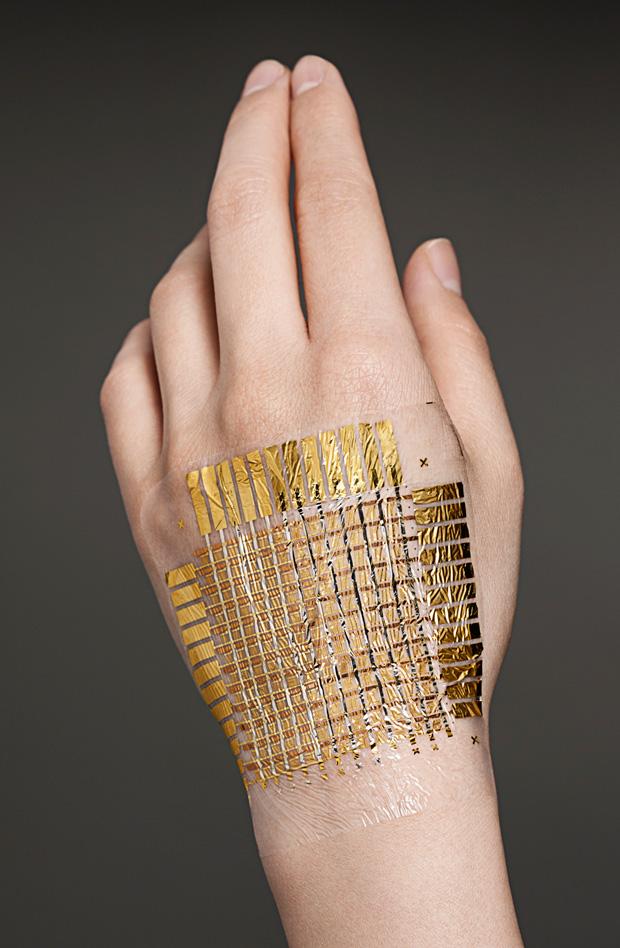Bionic Skin is almost human
November 13, 2013
A new television sci-fi crime series, Almost Human, builds on the relationship between a human police officer, John, and a sensing, feeling, and intuitive android named Dorian. What if the technology to sense artificially became a reality? What would its primitive ancestor look like? Maybe you’ll see a funky electrical board tattoo all over someone’s arms. Or maybe not. Bionic skin, or e-skin, as it’s called today, is the revolutionary technology that has the potential to change our actions, health and life.
Developed in Tokyo, scientists have always believed in creating a mesh of technology, thin and flexible enough to cover human skin: like a tattoo. About a decade ago, a team led by Takao Someya, a professor at The University of Tokyo, created a flexible electronic mesh and wrapped it around the hand of a robot.
“We had dreamed of making an electronic skin–e-skin–, embedded with temperature and pressure sensors that could be worn by a robot,” said Someya. “Today, we’re still working intensively on e-skin, but our focus is now applying it to the human body… [which] could be used to monitor medical conditions or to provide more sensitive medical prosthetics.”
This technology could be very beneficial to war veterans and diabetic amputees. Advanced robotic limbs, such as the Johns Hopkins University’s Modular Prosthetic Limb (MPL), can be covered by this bionic skin to produce a more dexterous and diverse human-like limb that senses and adjusts to its environment accordingly for these people.
The challenge that this vision presented was how the flexibility could potentially be achieved. The material needed to be bendable, so it could handle the wide range of surface flexibility throughout the human body. So by setting aside all cumbersome materials such as a metal based substances for the wrap material, Someya and his team resorted to sheets of plastic. They concluded that it was not only the cheapest, but also the most durable considering its quality, and hope that by keeping this technology inexpensive, it could be given to a wider range of people.
Someya’s most recent progression in his e-skin technology is his perfection of the overall width of the e-skin. Being not only stretchable to every surface of the human body, the e-skin’s width is a tenth of the common plastic kitchen wrap, and none of this hinders its performance. The mesh is made up of circuit boards, filled with silicon chips and chip capacitors. Transistors, and microprocessors can also be found, almost as if they were etched into the wrap: most things you would actually find in a television or computer.
“There’s no need to restrict things [for] refining human capabilities,” Someya explains. “An e-skin could also be light sensitive or contain ultrasonic detectors. It’s only a question of adding the appropriate flexible electronics.”
Being tested for multiple uses, the e-skin presents a wider variety of health benefits at a lower cost than expected. It has a wide variety of integration for humankind, including the potential of included light sensors, LEDs, as well as both ultrasonic and proximity technologies. The e-skin also has wireless transmission, meaning that it can be charged just by resting it on a charging pad. For example, the information extracted from the bionic skin can help skin cancer patients and burn victims by replacing the damaged skin and monitoring their sun exposure. Also, harmful skin ailments such as diabetes and thyroid disease could be better detected with this new bionic skin.
This technology is groundbreaking and has a incalcuable capacity for all sorts of medical and electronic uses. Someday, this may lead to the technology that would craft the skin of robots, like J.J. Abrams’ Dorian, the sensory instinctual cyborg, who shows similar impending actions of what the e-skin could do.








